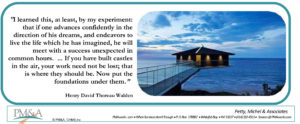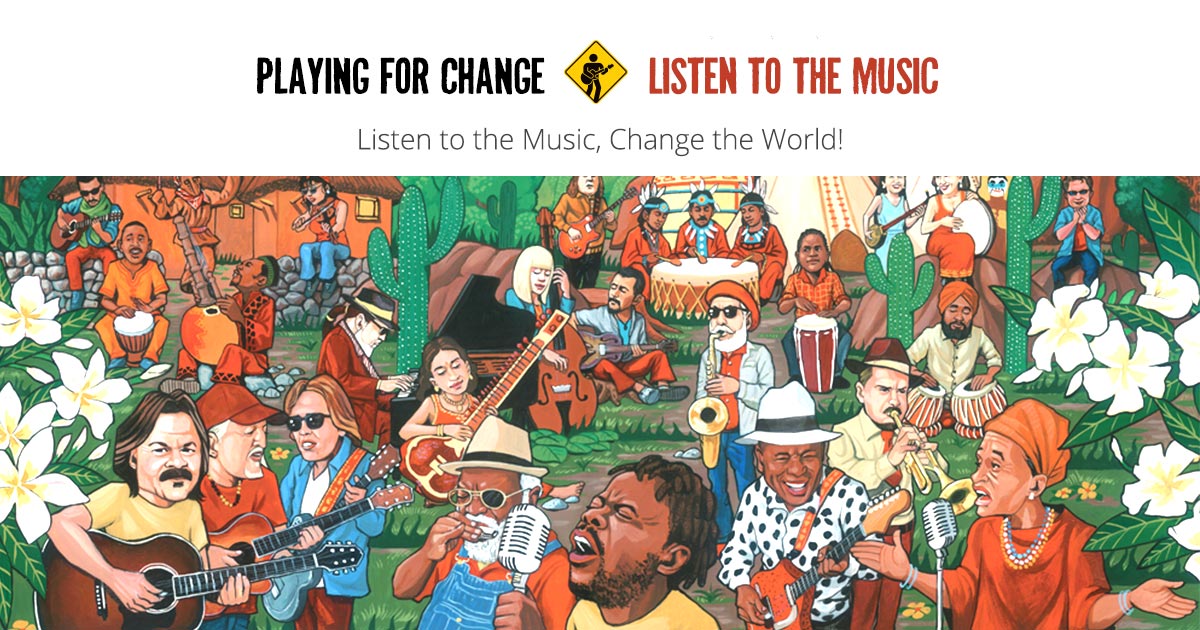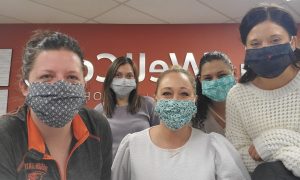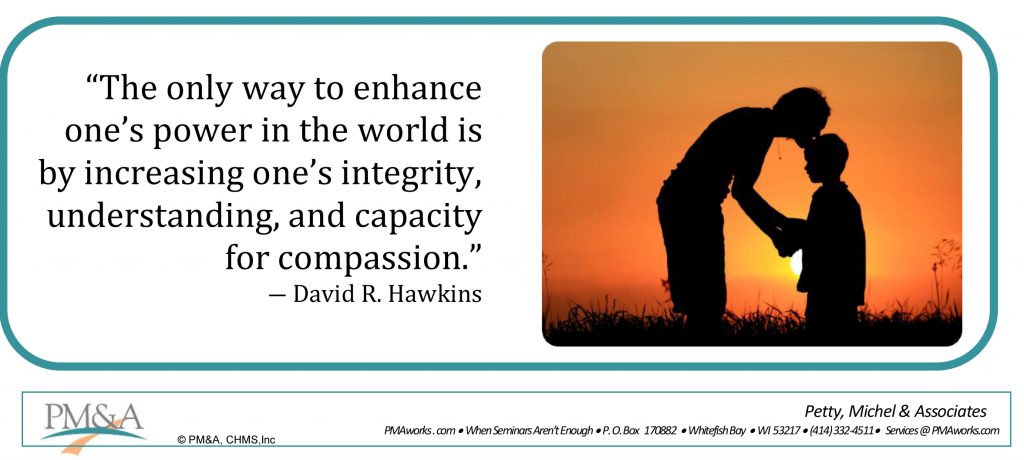“Feelings of anger, bitterness, and hate are negative. If I kept those inside me, they would spoil my body and my health.
They are of no use.”
For a printable copy of this tent poster email services@pmaworks.com

“Feelings of anger, bitterness, and hate are negative. If I kept those inside me, they would spoil my body and my health.
They are of no use.”
For a printable copy of this tent poster email services@pmaworks.com
“Everyday courage has few witnesses.
But yours is no less noble because no drum beats for you and no crowds shout your name.”
~Robert Louis Stevenson

For a printable copy of this tent poster visit: Everyday Courage-Stevenson
Here is some new information from our insurance expert Lisa.
Th AMA just released CPT Code 99072 which is relevant to chiros for the reimbursement for cleaning supplies, hand sanitizers, wipes, sprays. ect.
To read the article of the recent release please click here CPT Assistant Guide Coronavirus Sept 2020
What we know:
99072 is a special services billing code, used for additional supplies, materials, and clinical staff time over and above those usually included in an office visit or service. The code captures practice expenses during a Public Health Emergency such as:
FAQ
Q: What is the reimbursement for this code?
A: Reimbursement information is not available at this time. We will continue monitoring future communications regarding reimbursement.
Q: When is this effective?
A: Immediately.
Q: How much should I charge?
A: This all depends on what you paid for the supplies, what you pay your staff per hour, and taking into account how much time you spend on the additional activities. Our estimated calculation comes out to around $4-$5 per billing encounter, but this is an example estimate.
Again, we will post more information relevant to chiros as it becomes available.
Questions in the meantime? Email Lisa at lisa@pmaworks.com.
Sincerely,
Your Allies and Advocates at PM&A

Around the year 2000, I published the Marketing Manager System. It was initially a series of binders (3) to help chiropractors with their marketing. I received many compliments and positive reviews from both doctors and staff on how it helped them. Palmer Chiropractic College ordered a few hundred of the binders.
A couple of years later, I converted it into a software program and sold it as a CD package you could install on your computer. After a couple of years, I had to shelve the product. I was not set up to stay current with the constant changes in both software and the Internet.
Still, the information is sound, and it continues to work. Much of it is on our PM&A Member’s site, and though the graphics are somewhat outdated, the fundamentals still apply.
One of the motivations for publishing the Marketing Manager System was to solve a simple marketing challenge almost every practice we worked with had. In fact, the problem was so simple that it is almost embarrassing to explain.
We would get a call from an office requesting “something” to “get their new patients up.” “Got an ad that is working?” would be a typical request. And we would often hear this after working out an effective marketing plan that had been working for months at generating more new patients.
“What happened to your new patients? They were doing very well, even increasing,” we would ask. But when we checked if they were still implementing the marketing plan we had worked on, the usual answer was “no.”
We would go over the action steps on the marketing plan with them. “Are you still doing X?” “Umm, no, guess we forgot about that.” “Are you still doing Y?” “Oh yea, well, the staff member in charge of that took on another role so she couldn’t do Y anymore.”
You get the idea. What worked gradually gets abandoned.
So, I came up with the Marketing Checklists. These were a comprehensive list of marketing procedures, several hundred all told. They were a compilation of marketing procedures that we had used or had seen others use effectively. The idea was that by using the Marketing Manager System, the office would put together its own customized marketing checklists using ours as a template and reference.
This brings up the subject of checklists. In 2009, a surgeon named Atul Gawande wrote a book about checklists called The Checklist Manifesto. Here is a relevant section from his book:
“What is needed… is discipline. Discipline is hard — harder than trustworthiness and skill and perhaps even than selflessness.
We are by nature flawed and inconstant creatures. We can’t even keep from snacking between meals. We are not built for discipline. We are built for novelty and excitement, not for careful attention to detail. Discipline is something we have to work at.
Good checklists, on the other hand are precise. They are efficient, to the point, and easy to use even in the most difficult situations. They do not try to spell out everything–a checklist cannot fly a plane. Instead, they provide reminders of only the most critical and important steps–the ones that even the highly skilled professional using them could miss.
Good checklists are, above all, practical.”
By the way, I cover this in my new book, the Goal Driven Business scheduled to come out in early 2021. I have learned how to make these checklists more practical and, well, Goal Driven! (I plan to update all of the Marketing Checklists into their new Goal Driven version next year.)
So, from the archives stored away since 2000, enclosed is one of the 13 marketing checklists from the Marketing Manager System. This one is on Patient Referrals. It lists just a few procedures you can use to help generate more patient referrals. Of course, there are many more, and I recommend you make your own checklist and review it every 3 – 4 months.
And that is the key: keep marketing procedures that are working – working.
To help you do this, list them on a checklist and review the checklist regularly to ensure that they are still occurring. Use the checklist like an assessment. Look at each successful marketing action and ask: “Did this get done all the time, some of the time, or oops! Hardly at all.” Make sure all marketing duties are assigned. Then, where needed, improve them.
Stay Goal Driven and help your patients do the same!
Ed
Download the The Marketing Checklist on Patient Referrals.
Over the last few months, we have noticed that offices have continued to grow – some even breaking their previous records!
Why is this?
I have heard from doctors and office managers that patients may be hesitant to visit medical offices and prefer seeing chiropractors, acupuncturists, and other health-oriented offices instead. Are they just afraid of the COVID at medical centers, or are they truly seeking to improve their health and immune systems?
What have you heard?
I am going to guess that your practice is filling back up as well. What should you do to augment your growth, sustain it, and even increase it?
You want to think about retention and then generating more referrals – from patients and from community members. Consider the following:
As a more aggressive approach, you may want to be more vocal in promoting better health in all its aspects, from what we eat, breathe, to the kind of health care we seek. In this regard you could take on the role of Health Rebel, or even Health Outlaw!
Your unique selling principle (USP) should include your noble purposes that sets you apart from comparable alternatives. Consumers are looking for businesses that take responsibility for social and environmental issues. And, according to several studies*, this is especially true for the younger generation – Generation X – those born in the 1990s. Speaking out for better health in your community and against toxic pollutants, for example, is not only a noble purpose but – if genuine, has practical marketing benefits.
There really are two sides in our health culture – one for optimal natural health of the planet and of our bodies, and the other as advertised by corporations.
Your community is bombarded with thousands of advertising messages each day, many of them promoting drugs and COVID hysteria fears. Advertising is a form of population control, which is an advanced science, and which may be used increasingly to motivate your community to consume more vaccines, including for COVID. Yale University, as reported by Mercola, is testing advertising messages to shame, embarrass, anger, and otherwise motivate people to take the vaccines.
And the campaign has already started. According to USA today, it is patriotic to get vaccinated.
And it is not just the push for vaccines. Corporate medicine has been discrediting natural health remedies, including chiropractic, nutritional supplements, and certain medical practices such as chelation for years. And outside of health care, we can see advertisements for the cancer-causing Roundup (with glyphosate), “foods” with toxic ingredients (e.g. aspartame), and the suppression of information about mercury, hexavalent chromium (as in the movie Erin Brockovich), and other toxins currently in our drinking water.
This is really your time. This is a contest for health independence from corporate tyrants that have set up laws to escape liability for their actions. But those of you in the chiropractic profession are used to the fray. Now, you are not alone. Other doctors are also experiencing suppression and personal and professional retaliation and are joining the fight.
The sales of organic food and supplements continue to increase. And based upon your practice returning to pre-COVID levels, the tide just may be shifting towards true health.
But only with all of our help.
Helping you to help more people,
Ed Petty, and all of us at Petty, Michel, and Associates
“I learned this, at least, by my experiment: that if one advances confidently in the direction of his dreams, and endeavors to live the life which he has imagined, he will meet with a success unexpected in common hours. … If you have built castles in the air, your work need not be lost; that is where they should be. Now put the foundations under them.”
Henry David Thoreau Walden

For a printable version of this tent poster click: Castles in the Air-Walden
I’ll do whatever it takes to win games, whether it’s sitting on a bench waving a towel, handling a cup of water to a teammate, or hitting the game-winner shot.”
– Kobe Bryant

For a printable copy of this tent poster click: What it Takes to Win – Bryant
 “I will sell Chiropractic, serve Chiropractic, and save Chiropractic if it will take me twenty lifetimes to do it. I will promote it within the law, without the law, in keeping with the law or against the law in order to get sick people well and keep the well from getting sick.” — B. J. Palmer
“I will sell Chiropractic, serve Chiropractic, and save Chiropractic if it will take me twenty lifetimes to do it. I will promote it within the law, without the law, in keeping with the law or against the law in order to get sick people well and keep the well from getting sick.” — B. J. Palmer
What is it with all the bad news ALL the time?
Well, here is some good news: across the boards, practices are returning to their pre-COVID days. We monitor our clients’ numbers closely, and we see offices meeting, and in some cases, exceeding what they did at the same time last year! A few others are even hiring more doctors and staff.
What? Isn’t the world coming to an end?
Hell no! And here is why: people like you, and your patients, are, and always have been, rebellious. Health rebels! You question authority. (How dare you!)
What we are witnessing, for chiropractors and other non-conventional health offices, is nothing new. The good news and benefits of real health care are never promoted, and in fact, are suppressed. Got pain? Here, take some opioids. Back problem? We’ll just do surgery. Too much weight? We’ll suck the fat out. (yuck) Arthritis? Here, have some Vioxx.
You know what real health care is – and isn’t. And you know what? So do your patients. You can’t fool everyone all the time. And I would say that much of the world is with you, despite the massive media slant towards drugs and population crisis control. People are aware of organic food, for example, and so organic products and food stores have had explosive growth in the last 20 years. And supplements! The supplement industry has also seen mega growth and is expected to grow over 12% this year, according to Nutritional Business Journal*.
People know what side you are on – their side. They know what you stand for – health. You are the health doctors, coaches, and teams — curious, caring, and independent. You aren’t beholding to hospitals, a bureaucracy, or drug companies. This is what Dr. Zelenko cited as a factor to help him, and his colleagues come up with an inexpensive antidote for COVID that is 80-90% effective – so effective in fact, other countries are adopting it. I strongly recommend his YouTube videos, especially the one with Del Bigtree. (Link below.)
The chiropractic profession has been the largest and most active professional group standing up for true health for over 120 years. Absolute American and homegrown, your profession has been genuine guardians of health, and has withstood every attack imaginable. So, all this pandemic stuff is pretty routine for you guys and gals. And if this has made you Health Outlaws, I know that sits just fine with you.
Loads of sincere respect and thanks for crisis medical teams, as always. But keeping people out of crisis, out of hospitals is your goal, and ours as well. We share this goal with you and stand with you to help more people become healthier.
Thank you for all you do.
Ed and all of us at PM&A
Del Bigtree and Dr. Vladimir Zelenko 45 minutes
Deal Big Tree “Crimes Against Humanity” – with Dr. Zelenko and others, full presentation. 2:16
The Centers for Medicare and Medicaid Services(CMS) recently released a new ABN Form.
The ABN, Form CMS-R-131, and form instructions have been approved by the Office of Management and Budget (OMB) for renewal. The use of the renewed form with the expiration date of 06/30/2023 will be mandatory on 8/31/2020. We are including the links to the forms for your convenience and they can also be viewed at the CMS Web-site.
In addition to the expiration date on the form, there are a few other minor changes. If you have further questions please feel free to contact Lisa at 920-334-4561.
 Each Monday in June, I’ll be presenting an upbeat musical piece with a link below.
Each Monday in June, I’ll be presenting an upbeat musical piece with a link below.
Click the link and listen while you go to the office or while at the office. Sing or hum it. Listen to it with your team before you start your day. Play it while you see patients.
Play music during the week. Take a break, go out back, and dance like no one is watching. Don’t get too serious!
We are all part of a big family – you and your team, your patients, and your community. Nothing unties us more than music.
Good vibes to you,
Ed
JUNE 1 –– Starting the month off with musicians from around the world.
JUNE 8 — Let your patients — and community — know that you will stand by them. Let your team that you will do the same for them.
JUNE 15- Just as ripples spread out when a single pebble is dropped into water, the actions of individuals can have far-reaching effects. Dalai Lama (Azquotes.com)
We don’t always have to make a splash to cause ripples – sometimes our thoughts alone can make a difference.
JUNE 22 – First Monday of Summer!! Just fun music:
Island in the Sun by Weezer
Supplemental tune, a little Country with some drama but uplifting all the same.
It’s a Great Day to Be Alive by Travis Tritt
JUNE 29 Independence Day Week! (in U.S.A.)
Pick one, pick all them, get happy feet and have a great week!
Only in America Brooks and Dunn
This Land Is Your Land Woodie Guthrie
Born Free Kid Rock
I try to visit Facebook at least once a week. When I do, I sometimes see posts by others labeling the behavior of the public as “sheeple.” The term, I guess, refers to people acting obediently like sheep. The context usually includes those who believe that COVID-19 is a scam and view people who wear facemasks and observe CDC rules for quarantining as weak and stupid, and easily manipulated.
There certainly are indications, as well as precedents, that can support this view. The promotion of potential threats to generate fear has often been used to motivate people. Think of all the weapons of mass destruction that we were told Iraq had – which they didn’t have — that justified a 3 trillion-dollar war (estimated, Wikipedia) to the U.S. alone—not counting up to 400,000 killed. Someone made money off that scam.
There are over 100 cataloged types of biases, and we all have our own odd fears and weird ideas. Included with this is our basic “I-am-right” mechanism that makes others wrong and emboldens our ego.
Recently, I was talking to someone on their speakerphone while they drove in their car. They were wearing a mask and their voice was slightly muffled. I thought to myself that it was odd to talk to someone who was wearing a mask while in their car. Then, I was reminded that the person I was talking with has unselfishly devoted his entire life to taking care of his severely health-compromised daughter.
We all have our own stories and fight our own battles – with the best knowledge we have.
Another method to control people is to dissuade them from education and from learning to think critically and question authority.
So, I invite you to consider this as your #1 duty as a doctor – and as support staff — to educate your patients and community. Doctor, after all, means teacher.
People do not know what you know.
Perhaps they don’t want to know, are too tired, or seem too lazy to make an effort to learn. Maybe they have already made up their mind, and their view reinforces their own identity. But don’t give up on people — they are part of your family. They are your brothers and sisters.
Use newsletters, social media (even Facebook!), webinars, and especially Table Talk.
Educate because you care for people. Market your services from an attitude of compassion.
We are not sheep. We just don’t know. And regardless of what we say, privately, we look to you and your integrity — for your wisdom, your help, and your friendship.
Ed
The Story of Selling Yourself by B.J. Palmer

A tree withstands storms but continues with its systems.
Just a note here about procedures:
Keep the structure of your business – its policies and procedures — in place. As much as you can, stick to your usual routines.
Certainly, you want to integrate needed changes to prevent the spreading of the virus. And obviously, for many of you, patient volume has changed, so you may have to adjust your work hours and staff hours.
You do need to be flexible. Improvise — where needed, adapt, and overcome! (Paraphrase of Marine slogan!)
But do not let the virus be the tail that wags the dog!
Keep the recalls going. Keep the billing going. Hold staff meetings, if only by Zoom. Rally the team! Review numbers and SET GOALS. Give staff study assignments. If anything, increase your patient communication 5 times – or more.
Strengthen your network.
I bring this up as I have seen a few offices start to slack off on their procedures, and while this is understandable in many situations, it can be a slippery slope. This can set a precedent for neglecting other procedures. This is what leads to office anarchy and what I call “Procedural Atrophy.”
Procedural Atrophy is the gradual dropping out of procedures. For example, you used to call every new patient after their first adjustment and send out birthday cards. Then, you became so busy that you “didn’t have time” to do the calls or to makes sure the staff sent out birthday cards. Two years later, you wonder what happened to all your patients.
We are NOT victims. We will respond positively and use this opportunity to strengthen our resolve and our health network.
Hold true to time tested procedures during unusual conditions.
Stability breeds confidence. Your patients are looking to you to be the rock that they can count on.
Management’s job is to hold the structure of the organization in place. (And then improve upon it.) It may have to be abbreviated, economy of time, effort and money come into play, but … do the usual. Set your goals and stick to your successful procedures to reach them.
Do this, and after this storm passes — your business will be busier than ever.
Working now for the future,
Ed
 I have been in touch with most of you and, for the most part, you all are doing relatively well during these days of COVID-19. Of course, the keyword here is… relatively.
I have been in touch with most of you and, for the most part, you all are doing relatively well during these days of COVID-19. Of course, the keyword here is… relatively.
Whatta time, eh? Historic, that is for sure. It will change our society and our world as nothing has since, perhaps, WW 2.
The Lighthouse in the Storm
Your role, right now, is so very important. Perhaps more than you know. Your patients have fears, questions, and doubts. Their parents could contract COVID, perhaps they could. They are out of work or soon will be, and there is the apprehension that all of this is a government plot towards totalitarianism.
With all the communication regarding our current situation, you have to remain as a calm source for sound, researched data that provides comfort and solutions. You will have to be a lighthouse in this storm.
YOU are independent. You do not work for a drug company, and you are not beholding to a boss that works for a hospital or a government agency. Therefore, when patients come to you with worries and questions, they trust that what you tell them is unadulterated, unbiased, and accurate information.
And even more, they hope that you genuinely care.
Time to See the World Anew
In some sense, the world is experiencing a big “Time Out.”
Perhaps we can all take this time to become closer to our families and friends. My daughter is cooking more, my son is homeschooling his kids, and I am practicing guitar tunes from my old 1960’s book of folk songs!
I notice on my walks and runs that here, in Milwaukee, the air is fresher, cleaner, and the sky is bluer. Less smog from our southern neighbors and nearby freeways and overhead airplanes. The difference is striking and one can only imagine what we have been breathing in all this time!
It is spring, you have a family and friends, and you have your own self. COVID-19 doesn’t change this.
Good to Great: Redesign your NEW Business.
But what I am most looking forward to is the NEW.
Right now, you have a unique opportunity, during this temporary slump, to reimagine and redesign your business.
You’ve had a good, perhaps a very good business before. But as Jim Collins explains in his book, Good to Great, good can be the enemy of great.
The Good is now the Old, and we have this moment to review our goals and engineer better pathways to them. Now, you can create the Great! This will be your new version of your business based upon all you have learned as a professional and as a business owner or stakeholder. This new version can be your best creation ever.
Over the next few months, we will be discussing this, and I and all of us at PM&A, look forward to helping you and your team create the business of your dreams.
Looking forward to the future,
Ed
PS Happy Earth Day!
You and your team may not recognize this, and the word hero is overused, but in our book, this is what you are. Heroes.
Caught up with dealing with the urgencies of the times, you and your team may overlook the crucial and significant role you all play in raising the level of physical and emotional health of your community.
Without you, people in acute pain might tax critical and urgent care resources. Without you, patients on corrective or maintenance care might fall back into acute care.
You help alleviate our pain and improve our health – including our immune system. You calm our concerns with your well-informed insight and give us action steps to improve our health.
Health, as we know, is dependent upon mechanical, chemical, and emotional factors. Besides your adjustments and therapy, you provide education – and reassurance that this pandemic will pass.
I hear about it every day. You risk your health to help others, both physically and mentally.
Let your team know the vital role that they are playing.
Years from now, when asked what they did during 2020 Pandemic, they will be able to say that they were Essential Health Care Workers — and didn’t flinch.
And we just wanted to tell you – very sincerely – THANKS!
From all of us at Petty Michel and Associates.

Heros and Teamwork is what it takes to win this battle against COVID-19.
These are dedicated and brave support professionals and doctors – and there are thousands of you who work hard each day in spite of personal risk — to help others.
And there are also quite a few of us mask sewers! 🙂
Together, we’ll beat this virus.
I am sure that all of you are trying to stay up with unfolding events regarding the virus and the governmental recommendations – and enforcement — to deal with it.
We are, as well.
I am sending this email out to encourage you to watch an informative video by Del Bigtree, who reviews the facts and numbers of the virus pandemic. It is a bit long, so I am sending this out this weekend in case you have more time to watch it.
I have also included an article by Bruce Lipton. Dr. Lipton is a cellular biologist who taught medical students at the University of WI medical college and often speaks at chiropractic seminars.
Plus, an article that states 99% of those who died from the virus had other illnesses.
(Links below.)
We must watch out for the GENERALITY of the virus. For example: “COVID-19 could kill us all!” “Who says?” “They do.” “Who is “they.”” “The authorities.” “Who are the authorities?” “Those who are in charge.” You have to break it down and be as logical as you can.
I recommend that you review these sources, add to it what you are learning, and using your best judgment, continue educating your team members and patients/members/clients!
Be the lighthouse in your community.
Education and knowledge displace fear and uncertainty.
Let’s eradicate what Dr. Lipton calls the “nocebo” effect — the opposite of a placebo.
And let’s continue our fight to help people get healthier!
Keep educating,
Ed
By the way, no one is saying you must close your office. Even in California where San Francisco has a “Shelter in Place” or strict quarantine. For example, the California Chiropractic Board of Examiners, on their website, states:
YOUR SERVICES ARE VITAL!
The Exec. Director of the Kansas Chiropractic Association, in a letter to their state Governor (March 20, 2020), stated:
“We understand that with the severity of the current pandemic hospital emergency rooms may soon be filled with patients complaining of pulmonary symptoms. We offer our services in diagnosis and treatment of musculoskeletal complaints presenting to emergency rooms. Many Doctors of Chiropractic have arranged to be a referral point for their local emergency rooms on these conditions.
“We are prepared to see these patients in our offices that are already taking every precaution available to prevent the transmission of COVID-19.”
REFERENCES
Del Bigtree Coronavirus Quarantine March 19
Bruce Lipton Cornonvrus 2019-Covid-19 UPDATE
Bloomberg News March 18, 2020 99% of those who Died From Virus Had Other Illness, Italy Says
When you engage in work that taps your talent and fuels your passion – that rises out of a great need in the world that you feel drawn by conscience to meet – therein lies your voice, your calling, your soul’s code. (Stephen Covey)
For many of your patients, it may be difficult to tell how far to take precautions regarding COVID-19. Who can your patients turn to for a frank conversation and useful information?
Somewhere there is a middle ground between stockpiling hand wipes, toilet paper, and hiding in your bedroom and showing up at the gun show for a family barbecue and square dance. People are looking for reasonable answers without feeling that they are fearfully overreacting, or pridefully underacting.
You have to be that middle ground – and you can be. You do not have a boss that is beholding to Merck, or a company whose board members belong to the AMA. You are independent.
Use your voice and be a source of reason and information. Get in the conversation. You are only beholding to your patients and your community. They know your kids, and you know theirs. You are honest, thoughtful, and know that we are all in this together. You will ask your patients for their best advice on plumbing, cars, taxes, and other life needs. They will seek your advice regarding the best health for themselves and their family. You rely on them, and they rely on you – this year, now, and in the years to come.
Now is not the time to cocoon – not for you. Now is the time to speak up – to stand up.
Keep your practice open, but if not, keep communicating. Aside from seeing your patients in person, you can consider other activities that do not require face to face encounters:
You are a doctor – an educator, a leader. This applies to your team as well – they, too, are leaders and educators. Your community needs you now more than ever. Years from now, it will remember who was there, who stood up, who helped.
Use your Voice! Download the Poster Here
Always communicating,
Ed
We, too, are here to help.

How has the Coronavirus plague been affecting you and your practice…so far?
Most offices I talk to across the country seem to be doing just fine, thank you!
I ran across an interesting thread on a social media site for chiropractors and as a limited sample survey of how other offices are being affected, most report that they are also doing well.
I want to add a few thoughts from a marketing vantage point that might help. I am sure you are following the clinical aspects of this virus, but I have links below to articles from Bruce Lipton, Ben Lerner, and Joe Mercola that are very informative.
More importantly, a great link from our old buddy, George Carlin just to put things into perspective. So, you might want to save this email just for the links. (Gotta watch Carlin!… WARNING… as usual cursing included!)
So, marketing…
The idea of the Coronavirus is that it could kill you, or at least make you very sick. Consider these three promotional actions:
Safe Space. Promote your office as a Safe Zone. In your clinic, use plenty of disinfectant around the office. Let the patients see you wipe down tables, doorknobs, pens, clipboards, and have plenty of Purell (or something similar) around for hand wipes. This is to demonstrate that your office is taking all precautions to be a safe, sterile healing facility.
Get Healthier and Stronger. Secondly, promote the healing aspect of your services – how they can improve and bolster the immune system. The virus will have the most impact on the physically weak. Encourage patients to come in and get stronger in your safe space. (Ben Lerner has a good article about this – link below.)
Communicate and Educate. Use your “table talk” time, and through newsletters and other media, to communicate with your patients. Give them health tips regarding the virus. But also relay positive activities that are going on in your office – an upcoming talk, a community clean-up drive, a patient success or a new team member. This goes for your team as well – educate your staff. People tend to hunker down during a crisis, somewhat out of fear. Standup, standout and maintain your positive presence and leadership – keep communicating.
The viruses may be real and get transmitted from person to person. But ideas can do the same. So spread the word — communicate your office as a worry-free environment where people can become stronger and healthier – safely.
-Ed
I’ve noticed that a lot less people are coming in for care, I’ve especially seen a decrease in overall NPs, is the trend global? related to coronavirus outbreak?? (people being in “survival mode” , or being more careful about their finances)? I’d love to know what you guys have noticed surrounding this issue? Cheers, Kir 2 days ago
ostninja
I’ve noticed a drop this week. I think it’s critical to wipe all surfaces with something that works and have hand sanitizer available. For reality and to create a safe space where they dont have to think about getting it from the table or face rest.
Everybody is concerned. I think it is people limiting their activities, worried about money, worried about the face rest. Let them see you wiping down face rest every time you finish. I’m wondering about sending communication detailing how we are protecting them and ourselves but I’m also wondering how useful overall that would be.
Kiirjava
Interesting… Thanks for sharing 🙂 that communication idea is actually brilliant!
It’s been a slow week so I’ll use this as an excuse lol · 2 days ago
lloydchiro
I’m just as busy as ever, and I’m in San Francisco. I imagine our town will get hit soon.
AshlamAllstar 2 days ago
CCCA here. Only a few one-off scenarios so far. One patient called to pause her treatment plan due to fear of being exposed and one came in with latex gloves, her own lysol wipes and a face mask. Otherwise, practice as usual, if not, a few more questions asking of the doctors’ opinion of the matter.
—-
DrGodzilla22
My practice had grown during since the news cycles started. Well educated patient are referring their friends and families.
—-
DrJayWill · 1 day ago
I’ve had the busiest week I’ve had in a while
“The only way to enhance one’s power in the world is by increasing one’s integrity,
understanding, and capacity for compassion.”
― David R. Hawkins

For a printable copy of this tent poster click: Enhance Power- Compassion-Hawkins